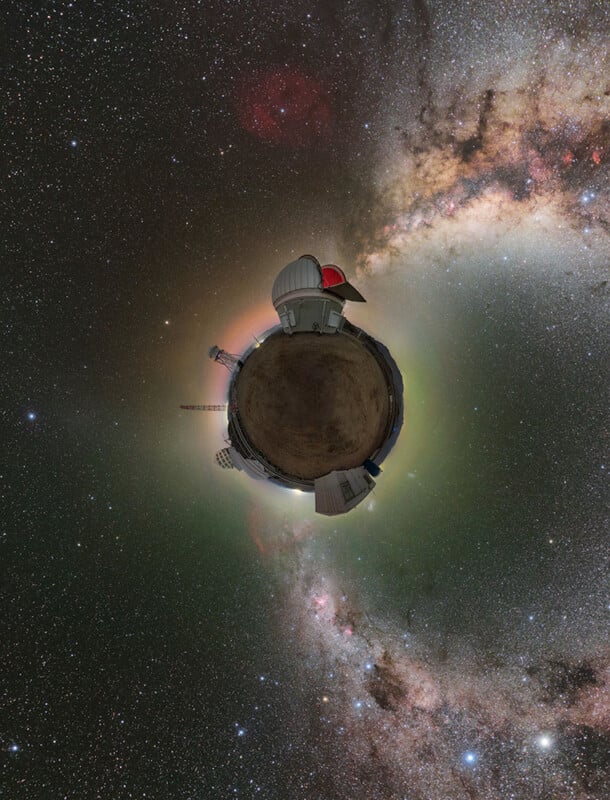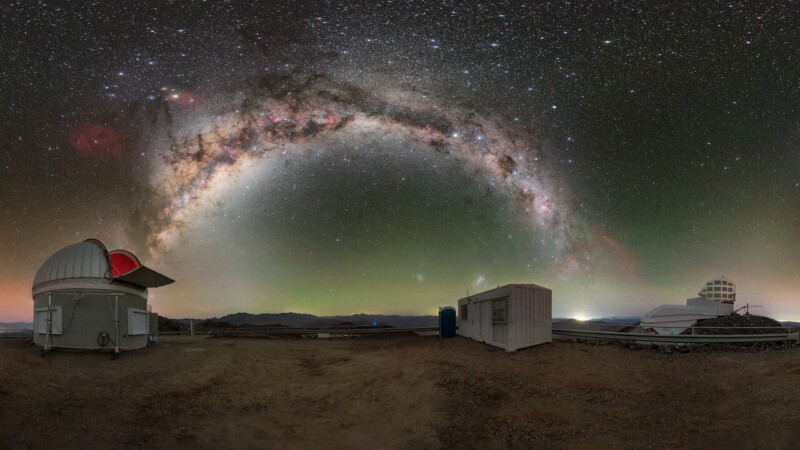![]()
While this surreal image looks like a planet floating in space, it is actually a 360-degree image of an astronomical observatory.
The Vera C. Rubin Observatory in Chile is still under construction but when it’s finished it will hold the most powerful digital camera ever built and make an unprecedented map the Universe.

This spectacular view of the observatory atop of Cerro Pachón, 8,850 feet above sea level, was taken by Petr Horálek, an astrophotographer from the Czech Republic who used a Canon Ra camera with a Sigma 35mm lens attached to take a series of 10-second exposures which were then stitched into a panorama.
“Pachon has epic night sky, and I felt I was literally within reach of the Universe … and also photographing something historically epic,” Horálek tells Live Science. “The Rubin Observatory will be the best survey telescope for many years ahead … so what a feeling capturing the new epic history of astronomy.”

When the telescope comes online in August, it will begin a decade-long survey: the Legacy Survey of Space and Time (LSST), which will scan the sky creating roughly 20 terabytes of data each night.
Scientists hope the LSST will identify anything that moves or brightens, i.e. asteroids and supernovas, but it’s also hoped it will discover 20 billion galaxies and stars.
![]()
The LSST Camera (pictured under construction above) is roughly the size of a small car and weighs three tons. It features a five-foot wide front lens and a 3,200-megapixel sensor that will be cooled to -100 degrees Celcius to reduce noise.
The large aperture, wide-field optical camera is capable of viewing light from the near ultraviolet to near-infrared wavelengths and is made up of 189 charge-coupled device (CCD) sensors arranged in a total of 21, three-by-three square arrays mounted on platforms called rafts.
The 64-centimeter-wide focal plane corresponds to a 3.5-degree field of view, which means the camera can capture more than 40 times the area of the full moon in the sky with each exposure.
Image credits: Rubin Observatory/NOIRLab/NSF/AURA/P. Horálek (Institute of Physics in Opava)
